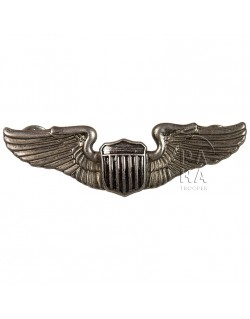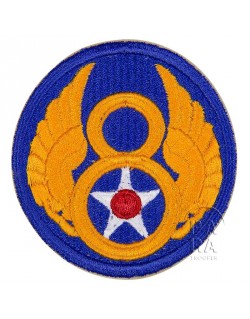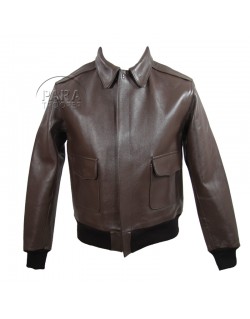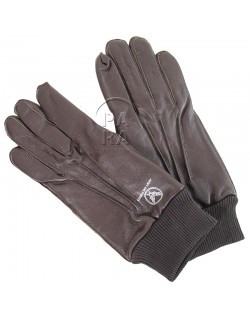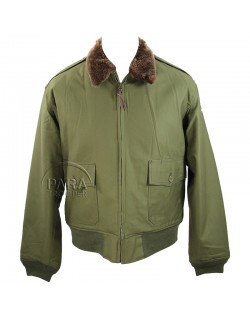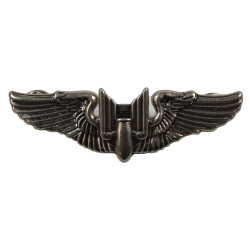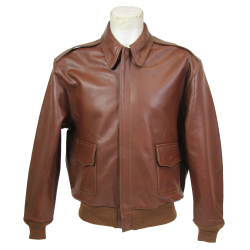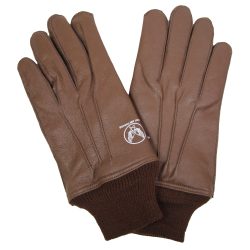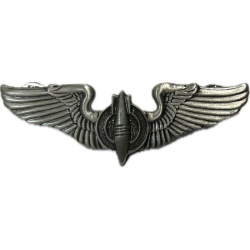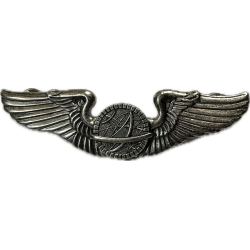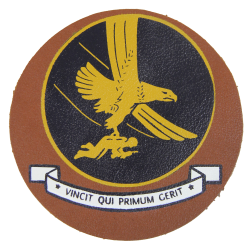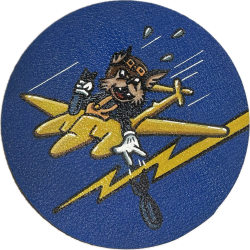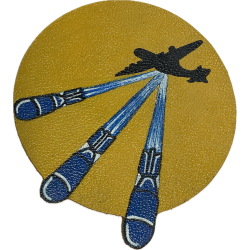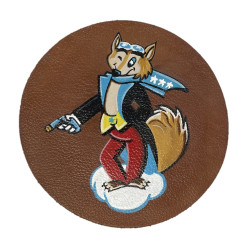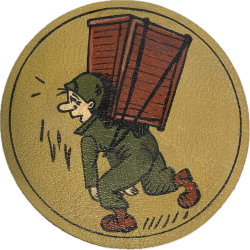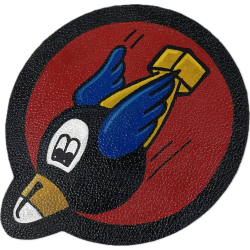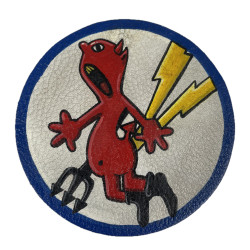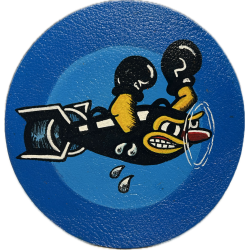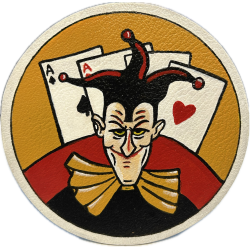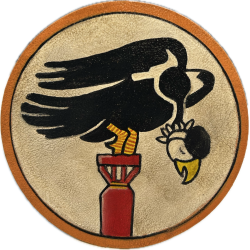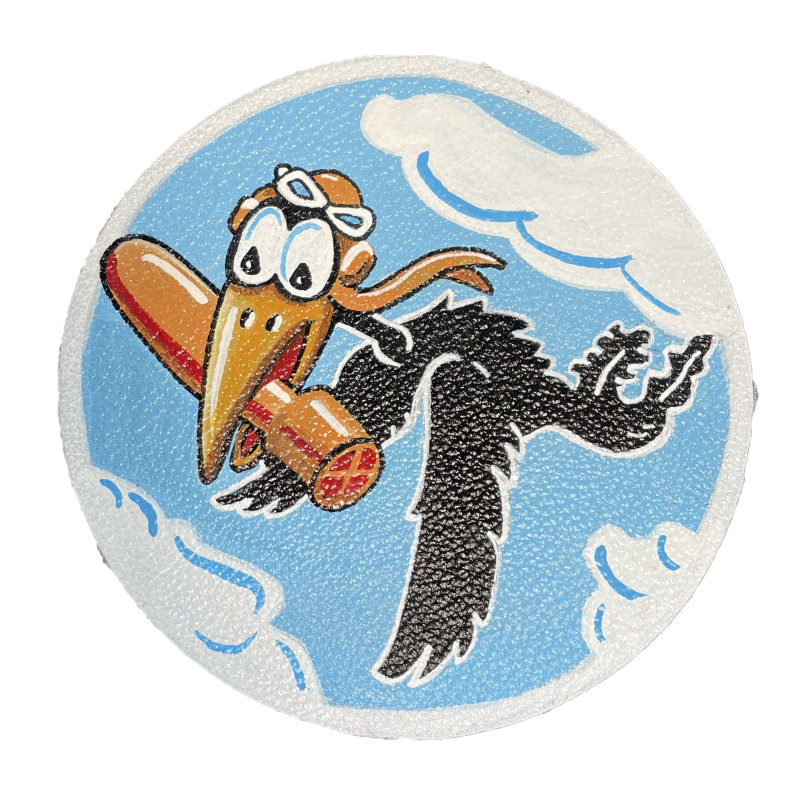

Chest Insignia, 670th Bombardment Squadron, 416th Bombardment Group, 9th Air Force, Leather
Superb reproduction of the chest badge of 670th Bombardment Squadron, 416th Bombardment Group (Light), 9th Air Force, hand-painted on a piece of leather.
Activated in January 1943, it became one of the four bomber squadrons of the 390th Bombardment Group (Light), equipped with A-20 Havocs (fuselage code: F6).
After several months of intensive training in Louisiana, the squadron reached England in February 1944, where it was assigned to the 9th Air Force.
After several months of bombing German factories, the squadron bombed Normandy coast on D-Day and would take part to in many other missions during the Battle of Normandy.
This large patch (12.5 cm in diameter) was worn by A-20 crews on their A-2 jackets.




